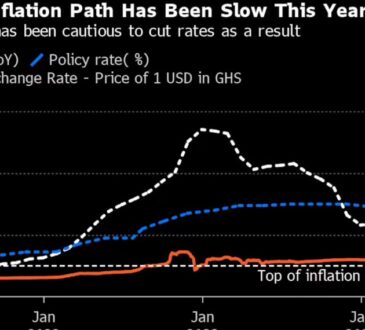
By Eugene Davis
Huawei, a leading global provider of information and communications technology (ICT) infrastructure and smart devices, believes deepening digitalization is the way to go and expects to spend US$3.4trillion by 2026 on global digital transformation.
According to Meng Wanzhou, Vice Chairwoman, Rotating Chairwoman, and CFO at Huawei underscored the importance of digitalization being the new blue ocean for the entire ICT value chain.
Speaking at Huawei’s Global Analyst Summit (HAS) on Wednesday in Shenzhen, China Meng said: “Digitalisation is a blue ocean for the whole industry,” she said. “Huawei will keep investing in domains like connectivity, computing, storage, and cloud.
The world is embracing this opportunity, with more than 170 countries and regions developing their own digital strategies. By 2026, Huawei expects that spending on global digital transformation will reach US$3.4 trillion”
Huawei is enabling productivity and efficiency improvements across industries such as mining, healthcare, ports, transportation and many others. It has built in-depth partnerships with nearly 200 power enterprises worldwide and provided digital services for more than 20 leading oil and gas enterprises and 800 mining enterprises
Digital Infrastructure
The company says it is building the digital infrastructure that will support these increasingly diverse and complex industrial scenarios. These networks require ultra-reliable and fast connections between people and intelligent objects, and between home and factories. Huawei is leading the development of the next generation 5.5G infrastructure, developing the technology and networks that will support over 100 billion connections and deliver a 10-gigabit user experience.
Ms. Meng outlined the four distinct characteristics of digital infrastructure that Huawei is delivering to help customers go digital; “We aim to provide our customers with digital infrastructure that has the simplest possible architecture and the highest possible quality, delivering the best possible experience at the lowest possible costs.”
“Our goal is to help organizations go digital in four stages: digitizing operations, building digital platforms, enabling platform-based intelligence, and putting intelligence to use. The time is ripe to thrive together in this new and exciting digital future.”
Driven by strategy, not technology
Meng went on to share three major takeaways from Huawei’s nearly 10 years of digital transformation experience. “First, strategy is essential. At its essence, digital transformation is about strategic planning and strategic choices. Any successful digital transformation has to be driven by strategy, not technology.”
“Second, data is the foundation,” she continued. “Data only creates value when it flows across an organization, so methodical data governance is key. Integrating data across different dimensions will create even greater value.”
“Third, intelligence is the destination. Data is redefining productivity. Digitizing operations and building digital platforms helps clean, visualize, and aggregate data, laying the foundation for digital transformation. Putting intelligence to use makes data on-demand, easier to understand, and actionable, taking digital transformation to the next level.”
“Going digital has to align with an organization’s strategic direction – help realize its strategic vision and predefined business goals. “She went on to say that “during the digitalization process, organizations will inevitably start incorporating new tools and technologies into their business, but these are only a means to an end.”
Putting intelligence to use on data makes it easier to understand, and actionable. This drives transformative management and production capabilities.
Digital transformation is not a one size fits all solution.
Huawei is developing application scenarios to make digital technology the source of new productivity by helping industry find the right technical solution for the right scenario.
Huawei and its partners have developed and released over 100 digital transformation standards for the smart city, finance, electric power, highway, aviation, and healthcare industries. By the end of 2022, over 700 cities and 267 Fortune Global 500 companies worldwide had chosen Huawei as their partner for digital transformation.
In terms of industry, Huawei has served more than 2,800 medical institutions and 50 of the top 100 financial institutions. In addition, Huawei’s solutions serve more than 100 airports and 100 ports, and have helped customers upgrade more than 200,000 km of roads, 300 urban rail tracks, and 150,000 km of railway tracks
We are also working hard to cultivate the broader digital talent ecosystem. Through initiatives like our ICT academies, competitions, and the Seeds for the Future Program 2.0, we provide case studies for schools, give students hands-on digitalization experience, and help the industry grow the digital talent pool.
“Digital technology is redefining productivity, driving a shift from quantity to quality, gradually becoming the key engine for socioeconomic development. The time is right to thrive with digital.”
The President of the Institute of Strategic Research Huawei, Dr. Zhou Hong on his part indicated that Artificial Intelligence (AI) should be developed based on the needs of people.
The goals of AI must be defined and aligned
He added “As AI’s capabilities are improving rapidly, we need to consider how to make sure the development of AI is what people want and ensure AI execution is accurate and efficient. We must create rules and laws to enhance AI ethics and governance.” He believes from a theoretical and technical perspective, these goals present three major challenges: AI goal definition, accuracy and adaptability, and efficiency.
“If we don’t have an agreed-upon definition, it’s almost impossible to ensure that the goals of AI and human beings will be aligned. It also makes it difficult to make reasonable classifications and computations” Dr Zhou explained.
He mentioned that there are many schools of AI, including symbolism, Bayesianism, evolutionism, behaviorism, and connectionism but they have not been effectively integrated which may explain why there are no commonly agreed upon goals for AI.







